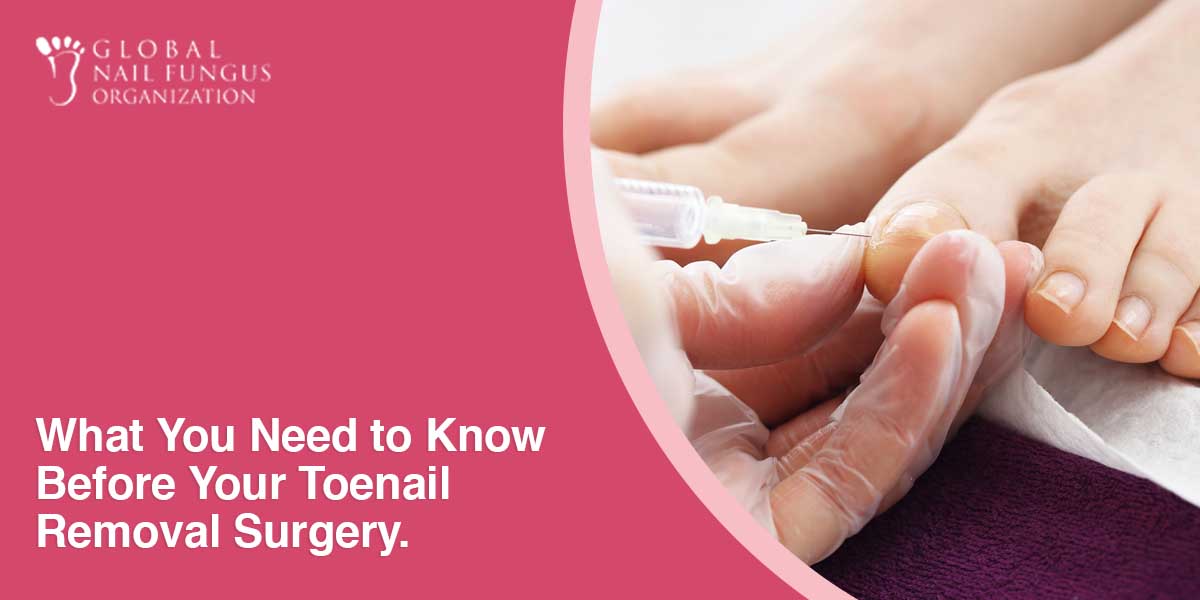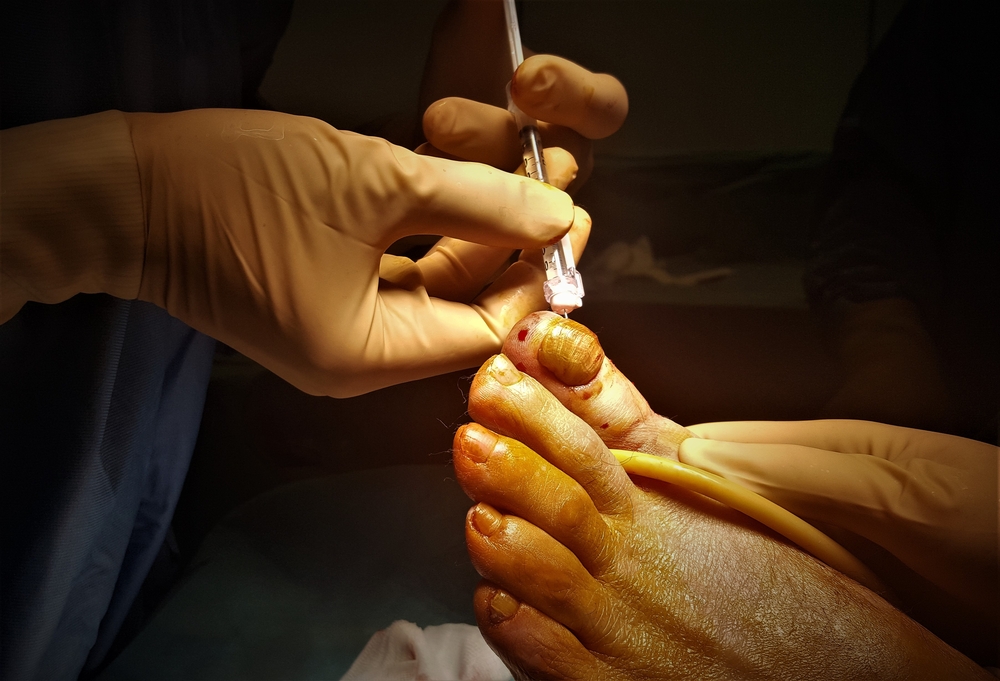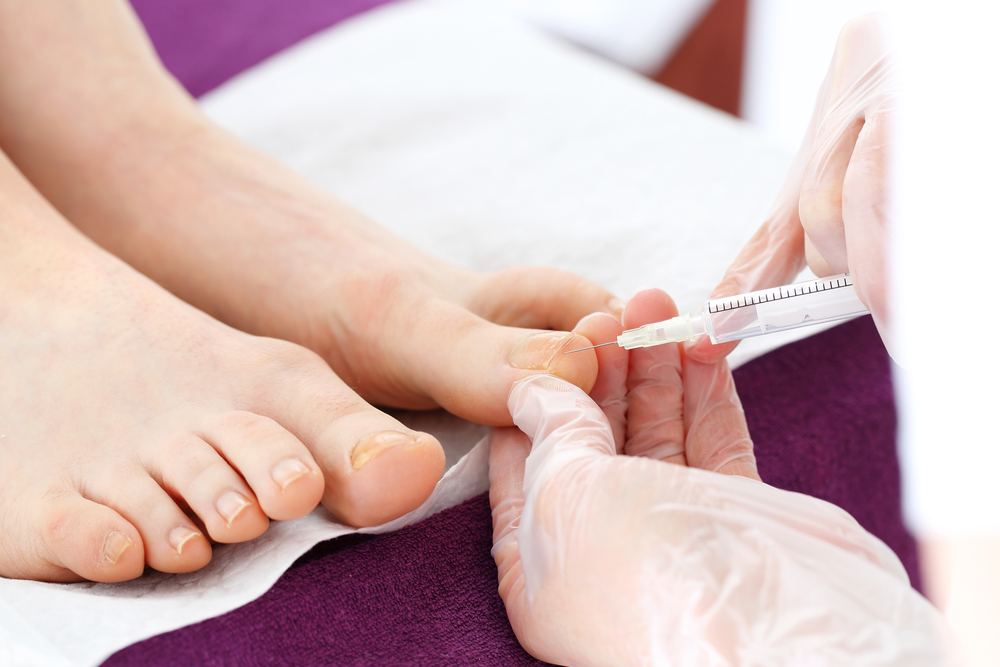
Unless you had your finger accidentally slammed in a door, you probably haven’t even had to think about a nail coming off one of your digits. However, it may be surprising to know that nail removal—specifically, removal of a toenail—is a fairly common procedure.
Sometimes removing the nail is the only way to fix, or attempt to fix, a recurring problem. But why would someone need a toenail removed? How is it done, how do you recover, and what are the most important things to know before having it done? Here are some of the most vital things to keep in mind before you go under the knife.
Know What It Is
Table of Contents
Toenail removal means the surgical excision of all or part of a toenail when it is diseased, painful, or infected. It is an extremely minor surgical procedure and can be completed very efficiently in a normal doctor’s office or a clinic.
Know What It Treats
Most frequently, toenail removal is a treatment for advanced cases of toenail fungus. (Fungus is a surprisingly common problem; over half of the nail infections treated by doctors are caused by fungi!)

It is also very commonly used to treat ingrown toenails (this way, the nail has a chance to regrow in the proper way and other less radical treatments can work more effectively on the nail bed) or “ram’s horn” nails.
Many times, a doctor may choose to excise a portion of the toenail to examine the nail bed, nail folds, or matrix more minutely, apply other treatments, or determine whether a biopsy is necessary in cases of potential cancers or fungal infections.
In addition, toenails can be removed in cases of toenail warts or tumors.
As already alluded to, the entire toenail is not always removed. Sometimes, only a portion is taken off, especially if it is the only diseased, ingrown, or otherwise adversely-affected part.
Know How It’s Done
A toenail removal procedure can be done in less than twenty minutes. It can safely and easily be performed at your podiatrist’s office or at a clinic.
Your doctor will inject a local anesthetic into your toe so you will not feel any pain (or likely any sensation at all). The doctor will then loosen the folds of skin around the nail, aptly called nail folds, and separate the nail from the toe by easing a tool beneath the nail.

This process is called avulsion. While some patients report feeling pain during the procedure, most do not, and generally report the pain comes afterwards.
Know It May Have to Be Permanent
At this point, if he or she has not discussed this with you earlier, the doctor may recommend that you have the nail permanently prevented from growing back. This is only done in severe cases of fungus or other disorders where the problem would simply keep occurring if the nail grew back.
(It can also be done if the nail matrix has been so badly affected by prolonged lack of treatment, or especially severe infection, that scar tissue would prevent the nail from growing normally ever again.) To do this, the doctor must destroy the nail matrix, which is the part of the toe that produces keratin, the element that toenails are made of.
The matrix can be dissolved chemically, which is the most common. This is called chemical cauterization, and involves the application of a chemical called phenol. Occasionally, some patients report their nails growing back, but generally this method is effective.
If this does not work, your doctor will perform a surgical matrixectomy. A flap of skin is surgically created at the base of the nail, where the matrix is located. After retracting the flap, the matrix is surgically removed.
Know Not to be Afraid
Surgery can be nerve-wracking and scary. Nobody likes pain, hospitals, scalpels, cuts, and anesthesia. The whole idea can be very unpleasant—even reading about it can turn the stomach!

But, it is very important to remember that thousands of people have experienced nail removal and have lived to tell (even laugh!) about it! While there may be some discomfort and pain following the procedure, if a qualified doctor or other medical professional has concluded this is the best treatment for your specific problem, let that give all the comfort it should. We are very blessed to live in a world where so many health problems can be easily corrected!
Know It Need Not Be Your Only Option
As already mentioned, nail removal is usually a last resort, after other methods have failed to be effective. As such, your doctor is not likely to recommend or even mention nail removal before trying oral and topical medications, ointments, and various other treatments.

Depending on the precise issue, many people have found great (even permanent) success and healing using all kinds of other treatments. Because nail fungus (see the symptoms here) is a very common reason for toenail removal, look at these different options for how to safely and effectively treat toenail fungus.
(You can and should also ask your doctor about any preferred or ideal treatments, and be sure to involve him or her whenever undertaking self-treatment options.) However, the more severe the case and the longer it has gone without treatment, the more likely your doctor will insist on nail removal as the only possible option.
Know What to Ask
As with any medical procedure, but especially anything surgical, it’s wise to know what to ask your doctor so you have the most understanding of what is going to happen to you. Some important questions include:
- Is this my only option?
- What exactly does the procedure involve?
- How effective will this be at treating my condition?
- Can I combine it with other treatment options safely? If so, which ones and at what point before and after surgery? (Multiple factors, including the specific stage of your condition and whether the nail has been partially or totally removed, will affect this answer. Whether or not the matrix has been destroyed, permanently preventing nail growth, will as well.)
- Can I drive a car?
- What other ways will my life be inconvenienced by this surgery?
- How painful will the recovery be?
- What are safe ways to deal with the pain?
- How can I properly care for myself afterwards and ensure a safe, speedy recovery?
- What do I have to do going forward to prevent the fungus or other issue from returning? (Don’t waste your surgery and have to do it all over again!)
Know How to Recover
Ideally, your doctor or other medical professional will have provided you with clear and understandable instructions for proper self-care following the removal. If so, be sure to follow these instructions precisely and with no deviation, and be sure to notify your doctor if there is unusual pain, heavy bleeding, or other complications so they can be dealt with immediately.

If your doctor has not given you specific instructions, the following basic ones will be a start:
- Be sure to wash the wound in warm, clean water twice a day, and change the dressing. This should be done in the first 24 to 48 hours. Do not use anything like rubbing alcohol because that will dry out the skin and impede healing.
- Cover the wound with a thin layer of Vaseline or other petroleum jelly and apply a nonstick bandage. Do this regularly.
- In the case of full nail avulsion, antibiotics may not be necessary. It is important to dress the wound in nonstick gauze (your doctor will do this for you) and to keep the foot elevated for the first 24 hours. Be sure to wash your hands with soap and hot water first to prevent infecting the wound. After that, you may soak the toe in warm water and redress it.
- Your toenail will take approximately 12 to 18 months to grow back completely. It will look different than your other toes given the injury to the nail bed.
Conclusion
Surgery of any kind tends to not be enjoyable, and it isn’t hard to see why. Besides the general inconvenience of recuperation, the fear of having sharp implements cutting into and removing any part of one’s body is rather disturbing, even if the removing is done by a trained, sane medical professional.
Doubtless if your doctor is recommending, or even insisting upon, toenail removal, you are at the end of a long road of pain, embarrassment, discomfort, frustration, and any number of other emotions that come with recurrent, recalcitrant medical issues.

While surgery isn’t supposed to be fun, knowing what to expect, what will be done, how to recover, and where to go from here will give you the mental framework to approach even minor surgery with resilience and security. Listen to your doctor, approach recovery with diligence and determination, and look at the removal as one step (pun definitely intended) towards the healthy, happy feet you want and deserve.






